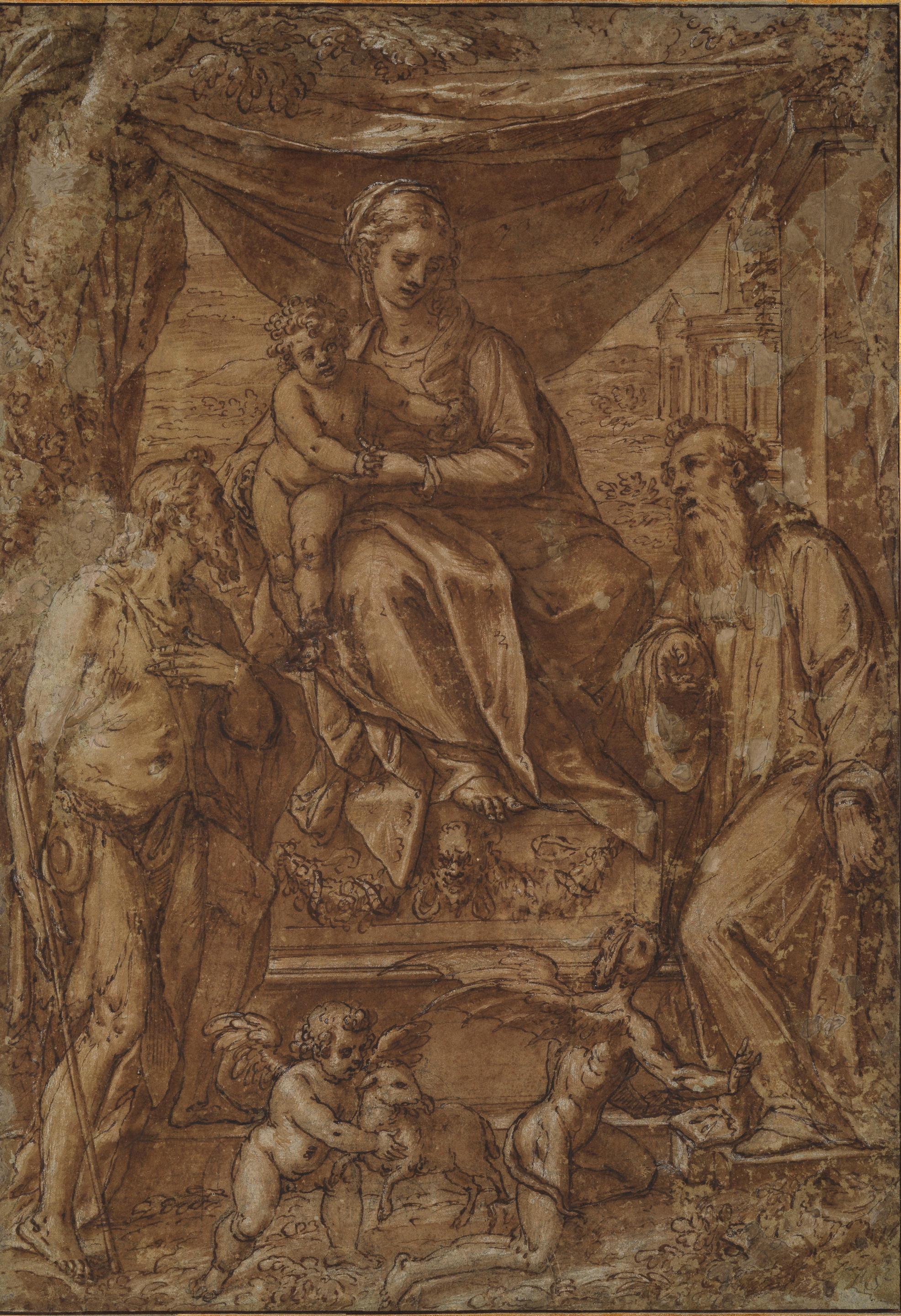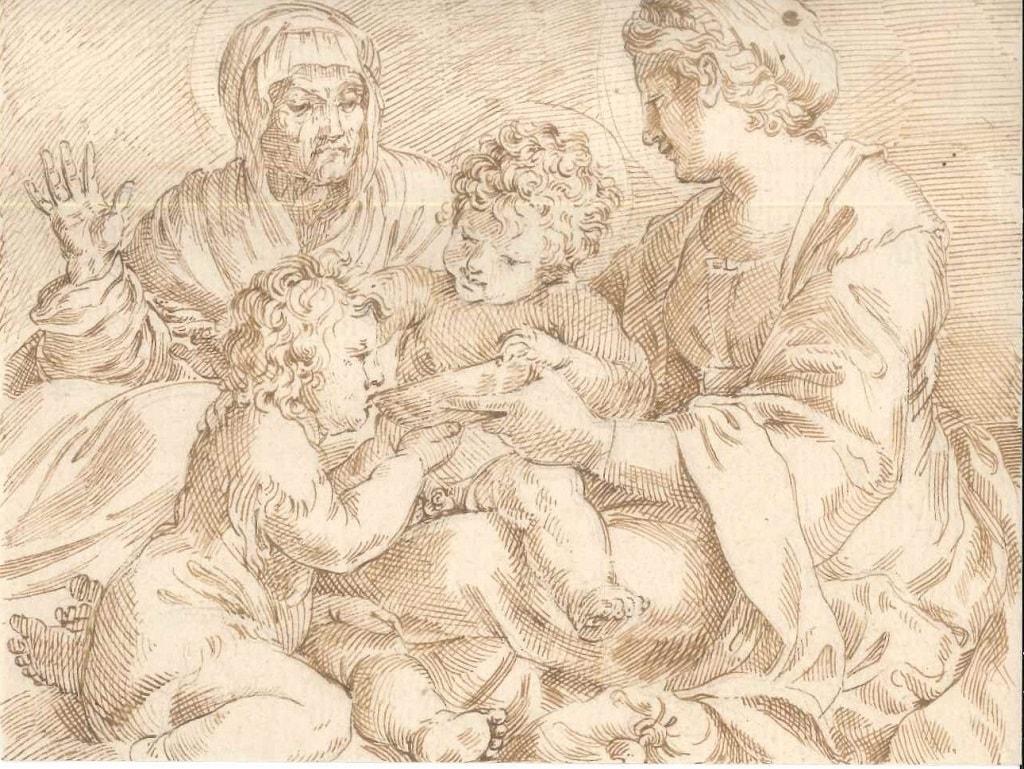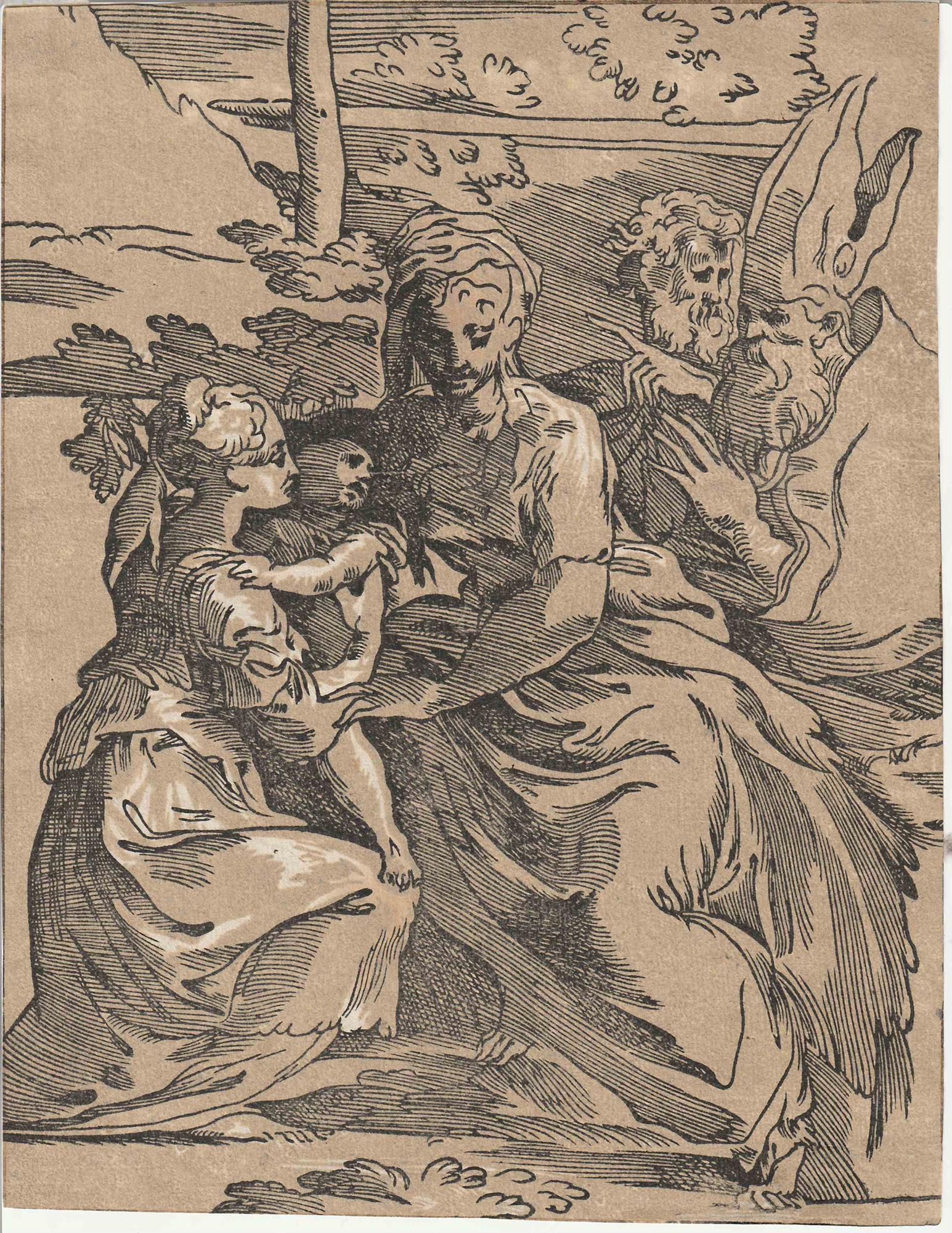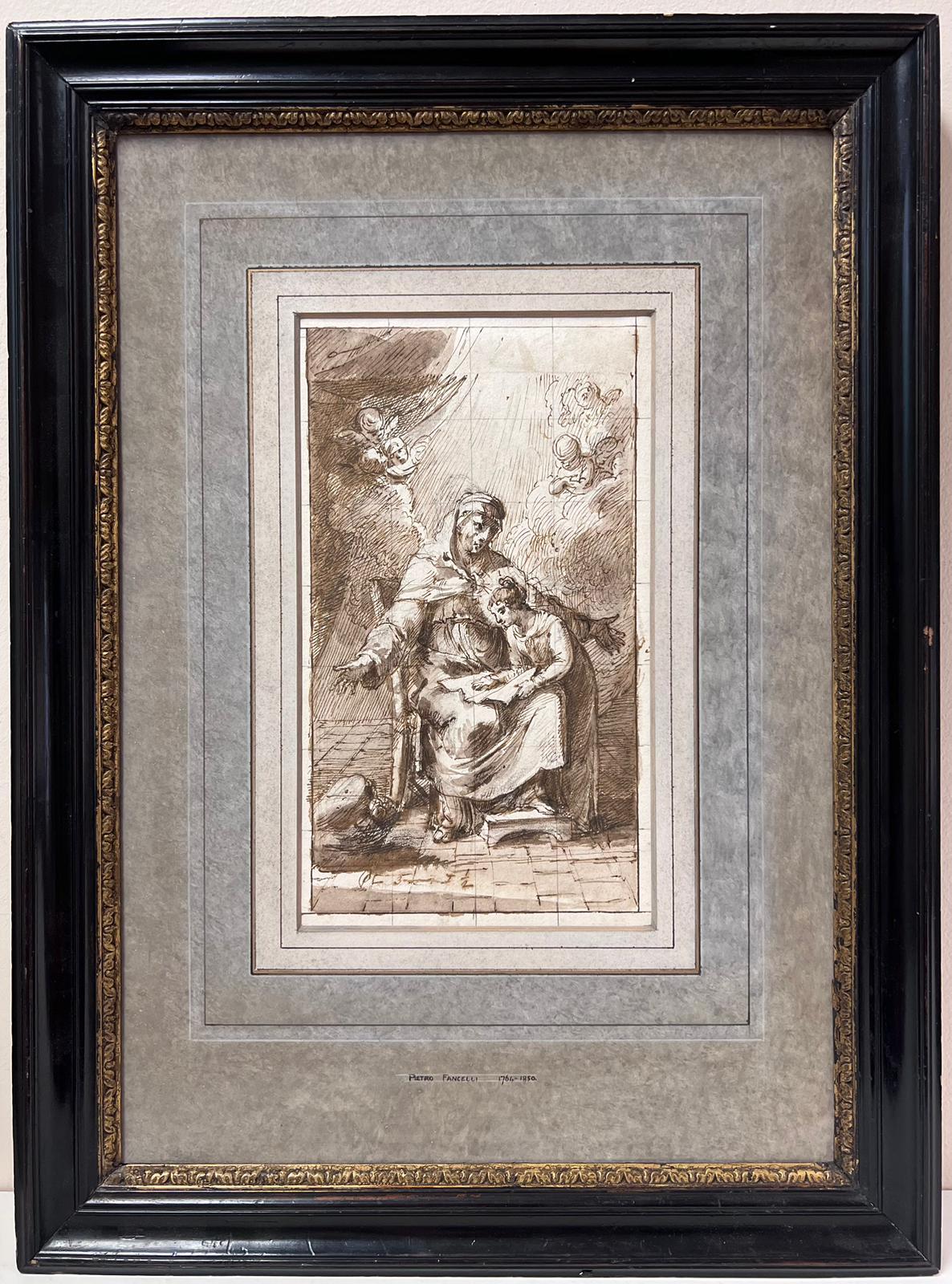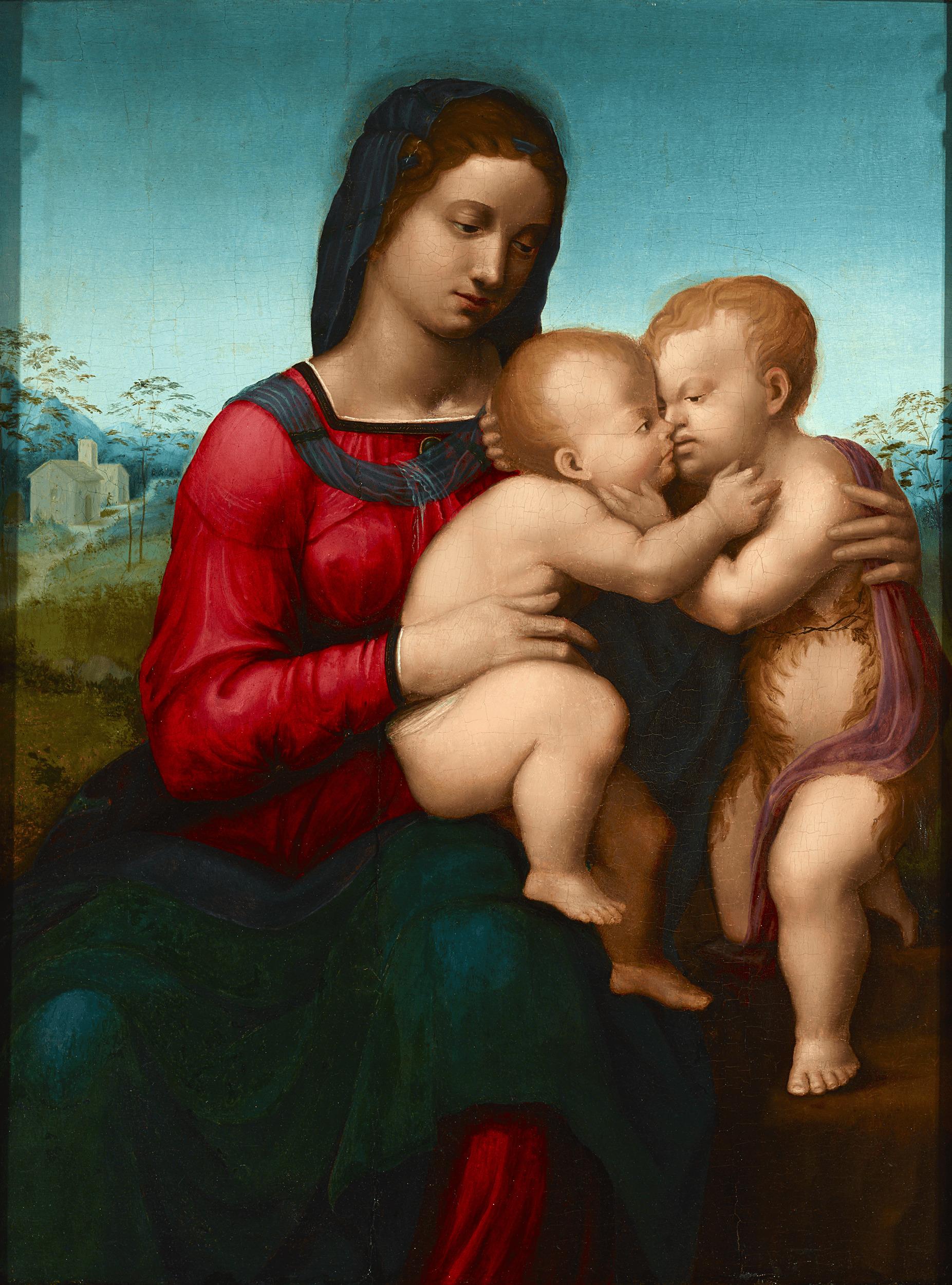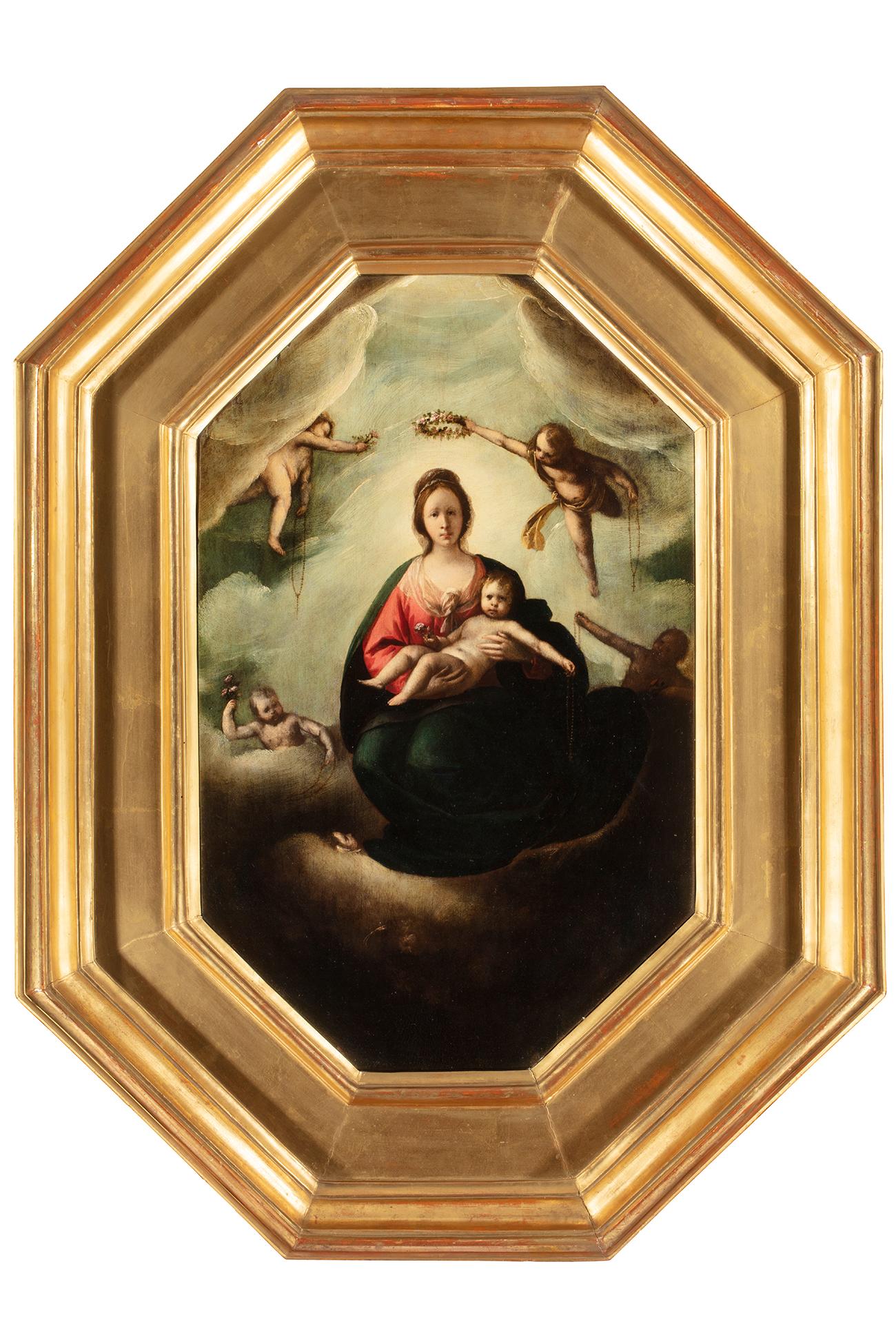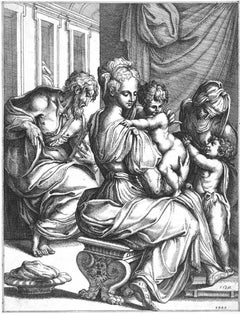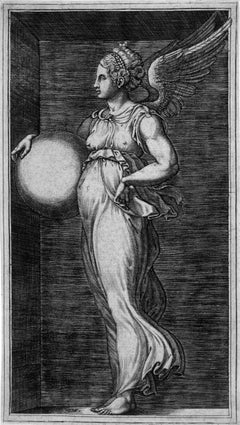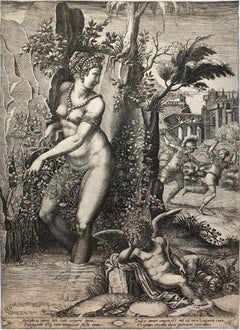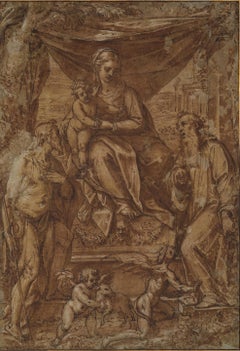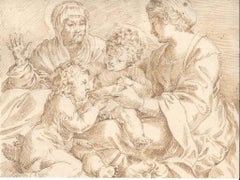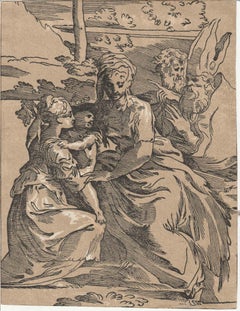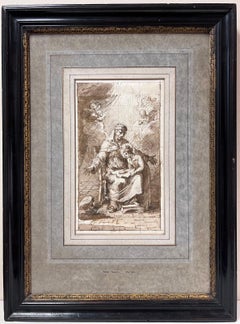Items Similar to Madonna and Child and Saint with Two Angels
Want more images or videos?
Request additional images or videos from the seller
1 of 5
Carlo MarattaMadonna and Child and Saint with Two Angelsc. 1680
c. 1680
$45,000
£34,163.23
€39,075.45
CA$62,871.53
A$69,926.86
CHF 36,513.63
MX$850,935.51
NOK 466,334.82
SEK 437,339.79
DKK 291,635.06
Shipping
Retrieving quote...The 1stDibs Promise:
Authenticity Guarantee,
Money-Back Guarantee,
24-Hour Cancellation
About the Item
This confidently executed drawing is a study related to Maratta’s painting La Vergine appare a S.Stanislao Kotska 1687 in the second chapel to the right, in the church of S. Andrea al Quirinale in Rome (see: Amalia Mezzetti, “Contributi a Carlo Maratti,” no. 93 on page 333 in: Rivista dell’Istituto Nazonale d’Archeologia e Storia dell’Arte, vol. 4, 1955).
- Creator:Carlo Maratta (1625 - 1713)
- Creation Year:c. 1680
- Dimensions:Height: 16.625 in (42.23 cm)Width: 10.825 in (27.5 cm)
- Medium:
- Movement & Style:
- Period:
- Condition:
- Gallery Location:Chicago, IL
- Reference Number:1stDibs: LU36535746612
About the Seller
5.0
Recognized Seller
These prestigious sellers are industry leaders and represent the highest echelon for item quality and design.
Established in 1955
1stDibs seller since 2016
14 sales on 1stDibs
Associations
International Fine Print Dealers Association
- ShippingRetrieving quote...Shipping from: Chicago, IL
- Return Policy
Authenticity Guarantee
In the unlikely event there’s an issue with an item’s authenticity, contact us within 1 year for a full refund. DetailsMoney-Back Guarantee
If your item is not as described, is damaged in transit, or does not arrive, contact us within 7 days for a full refund. Details24-Hour Cancellation
You have a 24-hour grace period in which to reconsider your purchase, with no questions asked.Vetted Professional Sellers
Our world-class sellers must adhere to strict standards for service and quality, maintaining the integrity of our listings.Price-Match Guarantee
If you find that a seller listed the same item for a lower price elsewhere, we’ll match it.Trusted Global Delivery
Our best-in-class carrier network provides specialized shipping options worldwide, including custom delivery.More From This Seller
View AllThe Holy Family
By Fra Bonaventura Bisi
Located in Chicago, IL
The Holy Family, 1634
Etching after Parmigianino (Parma 1503 - 1540 Casal Maggiore)
305 x 230 mm.; 12 x 9 inches
References:
Nagler Monogrammisten II...
Category
17th Century Old Masters Portrait Prints
Materials
Etching
Christ and the Little Saint John Playing with the Lamb (2nd State)
By Christoffel Jegher
Located in Chicago, IL
Woodcut after Peter Paul Rubens (Siegen 1577 - 1640 Antwerp)
337 x 451 mm.; 13 1/4 x 17 3/4 inches
Provenance:
The Metropolitan Museum of Art, New York, Duplicate stamp on verso...
Category
17th Century Baroque Figurative Prints
Materials
Woodcut
Allegorical Figure, Holding a Ball
By Giorgio Mantovano Ghisi
Located in Chicago, IL
Provenance:
Edouard Schultze (Lugt 906)
References:
Bartsch 34
Boorsch & Lewis 38
Notes:
A fine impression of this engraving. Boorsch and Lewis state that this work dates from “the mid-1560s” and suggest that it was after a work by Giulio Romano...
Category
16th Century Old Masters Figurative Prints
Materials
Engraving
Venus and the Rose (2nd State)
By Giorgio Mantovano Ghisi
Located in Chicago, IL
Engraving after Luca Penni
Category
16th Century Old Masters Prints and Multiples
Materials
Engraving
The Birth of Christ - With the Praying Shepherds
Located in Chicago, IL
A fine impression. With the address of P. Giffart. Mauperche produced over fifty engravings.
Category
17th Century Landscape Prints
Materials
Etching
The Triumph of Constantine the Great
Located in Chicago, IL
Inscribed on the verso: EE 27/10
Category
16th Century Old Masters Drawings and Watercolor Paintings
Materials
Chalk, Ink, Pen
You May Also Like
Virgin and Child with Saint John the Baptist and Saint Jerome
Located in Paris, Île-de-France
Felice Pinariccio, known as Le Lasagna (active in Bologna during the 1560s-1570s)
Virgin and Child with Saint John the Baptist and Saint Jerome
Pen and brown ink, brown wash heighte...
Category
16th Century Old Masters Figurative Drawings and Watercolors
Materials
Ink
Madonna della Scodella
Located in Roma, IT
Madonna della Scodella is an original drawing (black pencil, pen and ink on laid paper) by an exponent of the Italian school of the eighteenth century.
In excellent conditions: almo...
Category
19th Century Old Masters Figurative Drawings and Watercolors
Materials
Ink
Holy Family with Two Saints, after Parmigianino
By Antonio Da Trento
Located in Middletown, NY
Chiaroscuro woodcut on cream laid paper with a partial anchor in a circle watermark, printed from two blocks in black and olive-green, 10 3/4 x 8 3...
Category
16th Century Old Masters Figurative Prints
Materials
Ink, Laid Paper, Woodcut
Italian Old Master Ink & Wash Drawing St. Anne & The Virgin Mary with Cherubs
Located in Cirencester, Gloucestershire
Pietro Fancelli (Italian 1764 - 1850)
bio details attached to the frame
'St. Anne & The Virgin'
ink with watercolor wash on paper, framed
framed: 22 x 16 inches
image: 11 x 6.5 inche...
Category
Late 18th Century Old Masters Figurative Drawings and Watercolors
Materials
Ink, Watercolor
Virgin and Child with the Infant Saint John
By Domenico Puligo
Located in New Orleans, LA
A masterful example of Italian Mannerist painting, this exceptional panel was composed by the renowned Florentine painter Domenico Puligo. Alongside Jacopo Pontormo and Rosso Fiorentino, Puligo is remembered as one of the foremost figures of the Mannerist movement that rose to prominence during the 16th century in Florence. This panel of the Virgin Mary with the Christ child and Saint John the Baptist is a characteristic example of his celebrated devotional images, which grace museums such as the Metropolitan Museum of Art (New York), Museo del Prado (Madrid), Palazzo Borghese (Rome), and Palazzo Pitti (Florence), among many others.
Puligo’s skill with color is fully demonstrated in the beautifully preserved work. Considering its age, the vibrancy and the sheer range of color is remarkable. The Virgin Mary’s crimson dress...
Category
16th Century Mannerist Portrait Paintings
Materials
Oil, Panel
17th Century by Giovanni Stefano Danedi Madonna and Child Crowned by Angels
Located in Milano, Lombardia
Giovanni Stefano Danedi, called Montalto (Treviglio, Italy, 1612 - Milan, Italy, 1690)
Title: Madonna and Child crowned by angels
Medium: Oil on panel
Dimensions: without frame 58 x ...
Category
17th Century Old Masters Portrait Paintings
Materials
Oil, Panel
More Ways To Browse
Antique Chalk Art
Antique Angel Paintings
Church Angels
Angel With Child
Madonna And Child Antique Painting
Siena Palio
Leo Longanesi
Cat Watercolor Painting
De Kooning Watercolor
Black Country Watercolours
Pencil Drawings Trees
Head Of Woman Drawing
American 19th Century Watercolors
Pen And Ink French
Native American Pastels
Cubist Drawings
Mid Century Sketch Pencil
Watercolor On Silk
